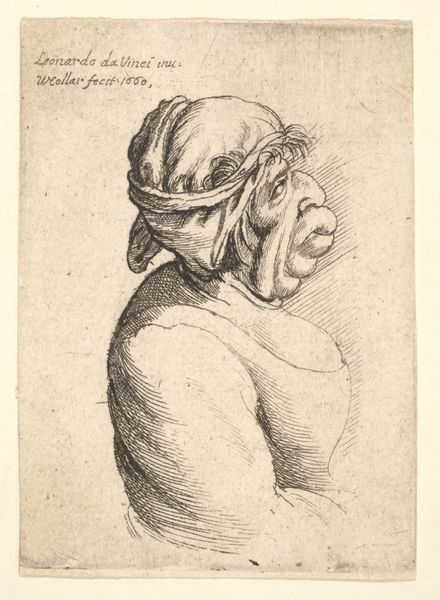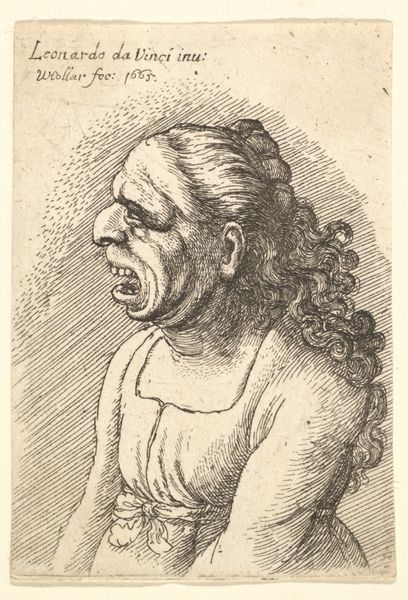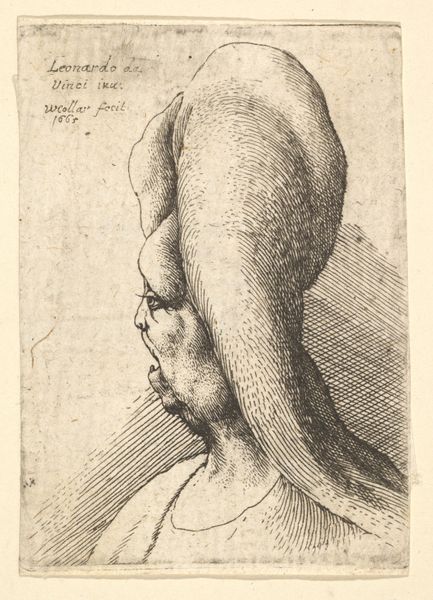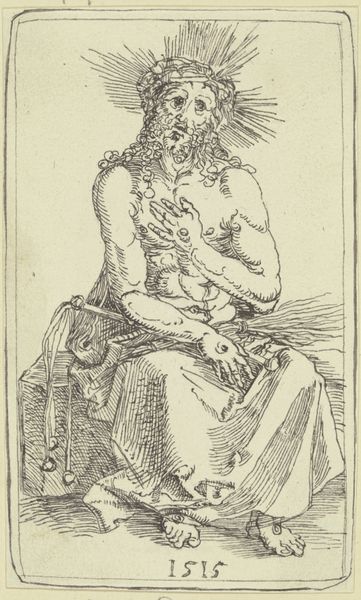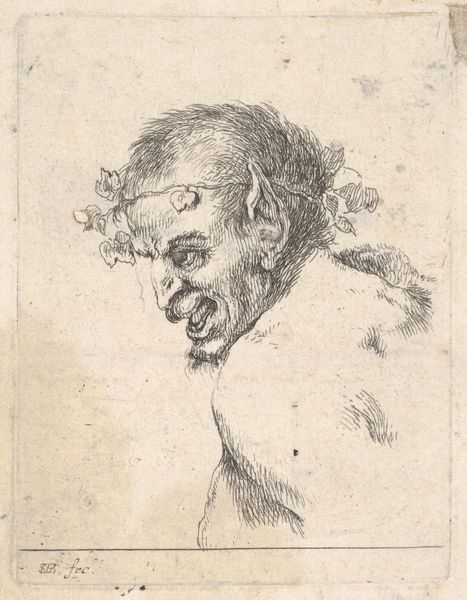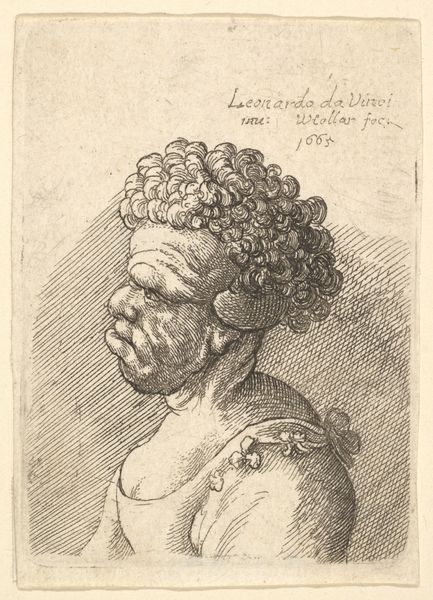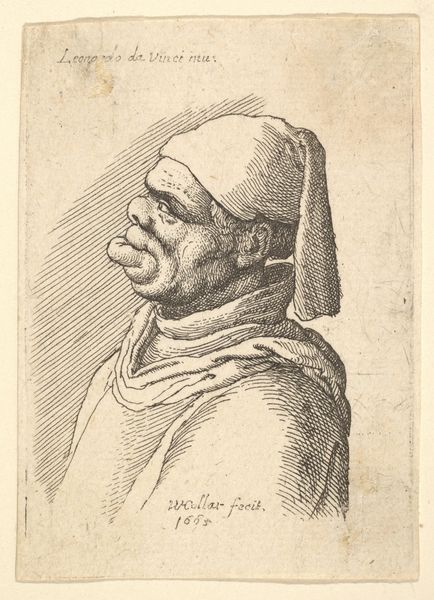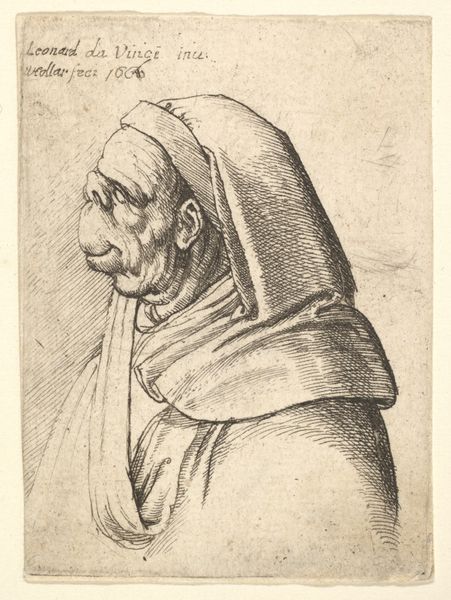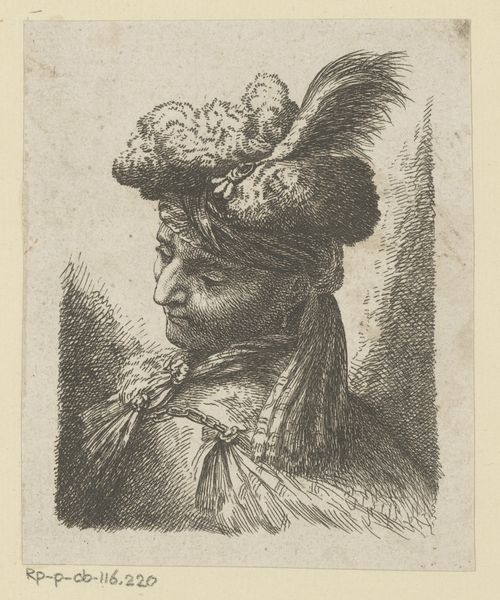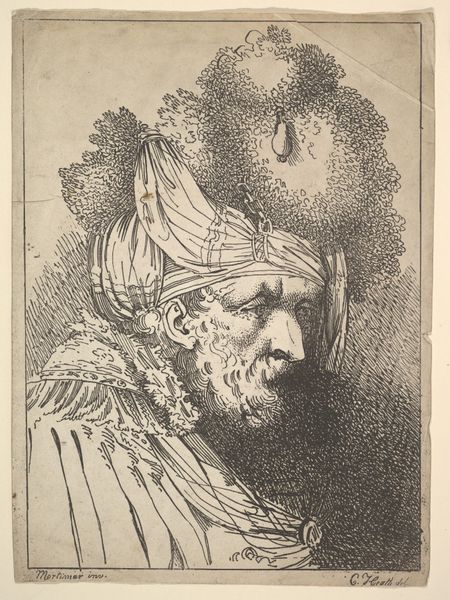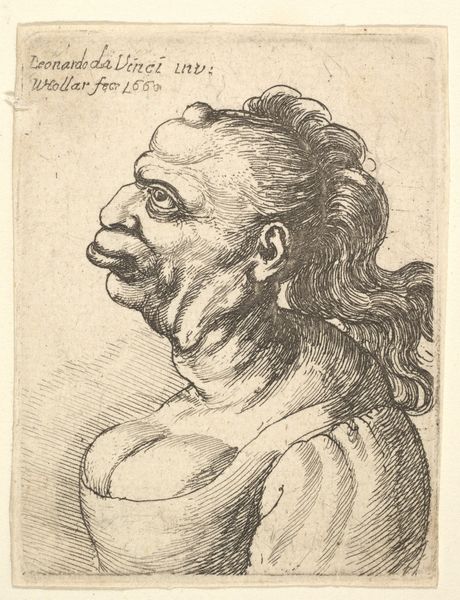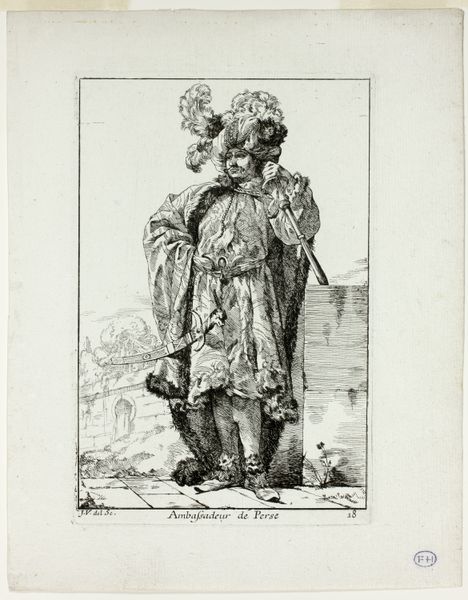
Bust of a deformed woman with conical hat and two dangling plaits in profile to left 1665
0:00
0:00
drawing, print
#
pencil drawn
#
drawing
#
light pencil work
# print
#
pencil sketch
#
old engraving style
#
personal sketchbook
#
pencil drawing
#
pen-ink sketch
#
men
#
sketchbook drawing
#
portrait drawing
#
pencil work
Dimensions: Sheet: 2 5/8 × 1 7/8 in. (6.6 × 4.8 cm)
Copyright: Public Domain
Curator: Wenceslaus Hollar rendered this striking print, "Bust of a deformed woman with conical hat and two dangling plaits in profile to left," in 1665. It's part of the Metropolitan Museum of Art's collection. The description attributes the original design to Leonardo da Vinci. Editor: It's incredibly stark, isn't it? The hatching lines are so prominent; it really emphasizes the unusual shapes and textures, lending a somewhat grotesque air. The conical hat and dangling braids strike me as… odd. Curator: "Grotesque" isn’t too far off. Works like these often functioned as "character studies" popular in that era—almost like phrenological documents suggesting interior states of being. Think of those exaggerated facial features. They would have been interpreted through cultural lenses associating them with particular temperaments, maybe as warnings, even. Editor: The profile view seems quite deliberate then, showcasing the perceived imperfections or abnormalities with utmost clarity. It's almost scientific, but then there’s the decorative aspect—the hat, the plaits—that pulls it in another direction. It softens the subject somehow. Curator: Yes, that tension between the objective observation, if we can call it that, and an almost fashionable presentation… Consider the plaits: their placement draws attention, yes, but also nearly suggests a distorted classicism, like corrupted beauty standards being played with in order to make a point. I am also struck by the shadows emphasizing particular details...perhaps some parts were purposefully darkened to further communicate with a certain audience in a cultural language we cannot fully decode? Editor: The details that draw the eye most—the bulbous nose, the folds around the mouth, even the almost misshapen cranium. There is undeniable attention brought by the very precise and directional etching lines. And there's a strange fascination with this unconventional face. Curator: We cannot detach such images from a history where societal outcasts and perceived flaws were spectacle, yet I also think these studies hold enduring psychological fascination—they mirror our anxieties about appearances, acceptance, and hidden selves. Editor: It is the disjunction between its visual language that feels antiquated, and that raw, underlying human experience that remains utterly modern. I feel the push and pull myself.
Comments
No comments
Be the first to comment and join the conversation on the ultimate creative platform.
